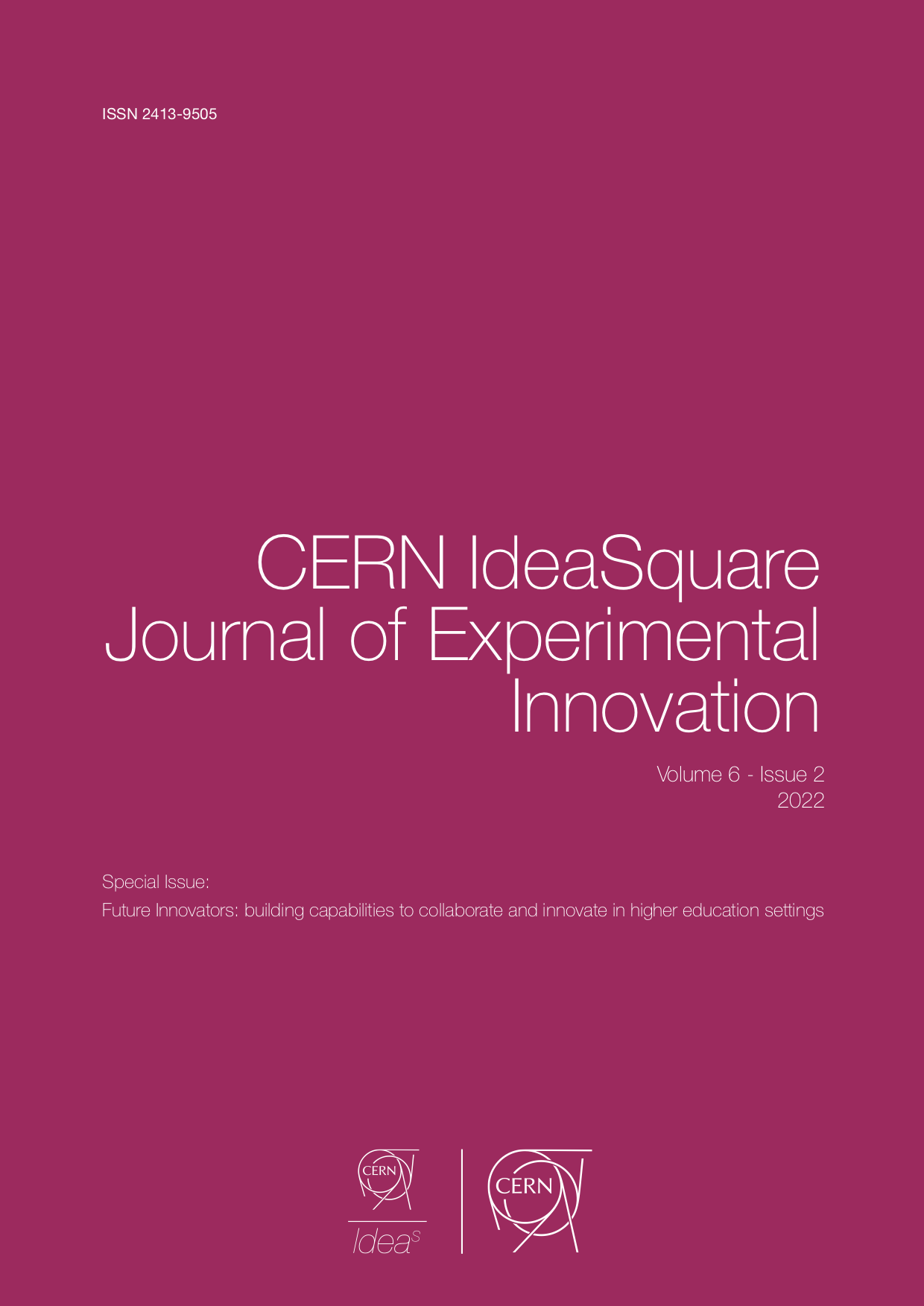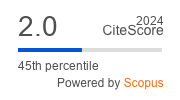Co-creating the future through design-based education in innovation hubs
DOI:
https://doi.org/10.23726/cij.2022.1413Keywords:
Design Factory, Challenge-Based Innovation, Design-Based Education, Challenge-Based LearningAbstract
Creativity and innovation have become prominent in higher education curricula. Applying a design paradigm has been frequently used to build innovative and creative skills in graduates across different discipline domains. Besides the design approach, another element that is important to increase innovation in organizations and society involves multidisciplinary and cross-sectoral cooperation. This observation triggered the establishment of the Aalto Design Factory in Finland in 2008, establishing an integrative, multidisciplinary education platform for design and experimentation. Offering vision, space, and courses focused on building capabilities to collaborate and innovate, Aalto Design Factory started sharing its reference model with other universities, supporting the establishment of other Design Factories worldwide. In 2022 the Design Factory Global Network (DFGN) included 37 co-creation platforms in 25 countries across the world. Sharing and learning from these experiences has become a crucial resource to develop DFGN operations further. One avenue where this takes place is a yearly meeting between the partners of the DFGN. In order to broaden the discussion beyond current Design Factories, as well as extend considerations from teaching and management to research, the first Design Factory Global Network Research Conference (DFGN.R) was piloted. In October 2022, 68 participants from 11 countries presented 22 studies at the first DFGN.R that took place at NHL Stenden University of Applied Sciences in Leeuwarden, The Netherlands. This special issue presents five selected papers that were first discussed at the DFGN.R 2022. The studies approach innovation and education from complementary perspectives and methods. Most of the studies have been conducted at one of the Design Factory hubs, showcasing the range of collaborative activities that happen in these hubs to increase innovation capabilities. Taken together, these five papers from three different continents give a glimpse into the activities taking place in the various Design Factories around the world. They explore how new approaches to innovation and creativity in Higher Education can take place, through applying effectuation theory and social learning theory, featuring metaphors such as cooking and sailing to inspire co-creation in action. We hope that these experiences will inspire educators, researchers, students and organizations active in Design Factory’s and similar co-creation platforms, to continue experimenting with the design paradigm, by exploring approaches and skills towards innovation and creativity that are imperative to champion change.
References
Assen, H., Rinck de Boer, M., Fernandes, M.B., 2021, Moving to design-based education in hotel management school: proof of success and beyond — a research journey, Research in Hospitality Management, 11:2, 145-150. https://doi.org/10.1080/22243534.2021.1917754
Björklund, T.A., Keipi, T., Celik, S. & Ekman, K., 2019, Learning across silos: Design Factories as hubs for co-creation, European Journal of Education, 54(4), 552-565.
Deo, S. & Malge, A., 2022, Understanding engineering students' perceptions of their curiosity, diligence, and perseverance and assessing its impact on their creativity. CERN IdeaSquare Journal of Experimental Innovation; 6(2): 28-40. https://doi.org/10.23726/cij.2022.1398
Dym, C.L., Agogino, A.M., Eris, O., Frey, D.D. & Leifer, L.J., 2005, Engineering Design Thinking, Teaching, and Learning, Journal of Engineering Education, 94(1): 103–120.
Feng, X. & Björklund, T.A., 2022, Looking beyond your own speciality: Student and faculty perceptions of collaboration opportunities. CERN IdeaSquare Journal of Experimental Innovation; 6(2): 20-27. https://doi.org/10.23726/cij.2022.1395
Figueiredo, S., Ganoo, A., Eriksson, V., Ekman, K., 2022, Future-ready skills development through Experiential Learning: Perceptions from students working in multidisciplinary teams. CERN IdeaSquare Journal of Experimental Innovation; 6(2): 12-19. https://doi.org/10.23726/cij.2022.1397
Geitz G. & De Geus J., 2019, Design-based education, sustainable teaching, and learning, Cogent Education; 6(1). https://doi.org/10.1080/2331186X.2019.1647919
Howe, S., Goldberg, J., 2019, Engineering Capstone Design Education: Current Practices, Emerging Trends, and Successful Strategies. In: Schaefer, D., Coates, G., Eckert, C. (eds) Design Education Today. Springer, Cham. https://doi.org/10.1007/978-3-030-17134-6_6
Howe, S., Rosenbauer, L., & Poulos, S., 2017, The 2015 Capstone Design Survey Results: Current Practices and Changes over Time, International Journal of Engineering Education; 33(5): 1393–1421.
Iandoli, L. & James, K., 2022, Design-driven entrepreneurship: a cooking exercise to integrate effectuation and design thinking. CERN IdeaSquare Journal of Experimental Innovation; 6(2): 41-50. https://doi.org/10.23726/cij.2022.1399
Joore, P., Stompff, G., Van den Eijnde, J. (eds.), 2022, Applied Design Research - A Mosaic of 22 Examples, Experiences and Interpretations Focussing on Bridging the Gap between Practice and Academics. CRC Press, Boca Raton, FL. https://doi.org/10.1201/9781003265924
Kelley, T., 2001, The art of innovation. Currency Doubleday, New York, NY, USA.
Sarasvathy, S.D., 2001, Causation and effectuation: Towards a theoretical shift from economic inevitability to entrepreneurial contingency. Academy of Management Review; 26(2), 243-288.
Schumpeter, J., 1934, The Theory of Economic Development, Harvard University Press, Boston, MA, USA.
Simon, H.A., 1969, The sciences of the artificial. MIT Press, Cambridge, MA, USA.
Tan, L., Mesa, D., Thong, C., Mattila, P., Kocsis, A., Down, A., Lodewyckx, S., 2022, Building team research targets and capacity in innovation hubs. CERN IdeaSquare Journal of Experimental Innovation; 6(2): 4-11. https://doi.org/10.23726/cij.2022.1396
Ward, T.A. (2013). Common elements of capstone projects in the world's top-ranked engineering universities, European Journal of Engineering Education, 38(2), 211-218. https://doi.org/10.1080/03043797.2013.766676
World Economic Forum, 2020, Future of Jobs Report 2020. World Economic Forum, Geneva. https://www3.weforum.org/docs/WEF_Future_of_Jobs_2020.pdf
Downloads
Published
How to Cite
Issue
Section
Categories
License
Copyright (c) 2022 Peter Joore, Tua Björklund, Christine Thong, Eduardo Zancul

This work is licensed under a Creative Commons Attribution 4.0 International License.
Authors who publish with this journal agree to the following terms:
- Authors retain copyright and grant the journal right of first publication with the work simultaneously licensed under a Creative Commons Attribution License that allows others to share the work with an acknowledgement of the work's authorship and initial publication in this journal.
- Authors are able to enter into separate, additional contractual arrangements for the non-exclusive distribution of the journal's published version of the work (e.g., post it to an institutional repository or publish it in a book), with an acknowledgement of its initial publication in this journal.
- Authors are permitted and encouraged to post their work online (e.g., in institutional repositories or on their website) prior to and during the submission process, as it can lead to productive exchanges, as well as earlier and greater citation of published work (See The Effect of Open Access).


